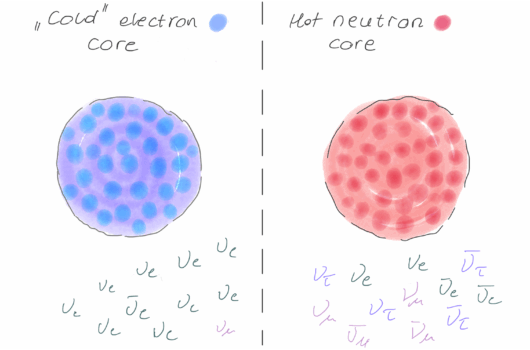A Continuous Galactic Line Source of Axions: The Remarkable Case of 23Na
A Continuous Galactic Line Source of Axions: The Remarkable Case of 23Na
View
Abstract
We argue that ![]() Na is a potentially significant source of galactic axions. For temperatures
Na is a potentially significant source of galactic axions. For temperatures ![]() K — characteristic of carbon burning in the massive progenitors of supernovae and ONeMg white dwarfs — the 440 keV first excited state of
K — characteristic of carbon burning in the massive progenitors of supernovae and ONeMg white dwarfs — the 440 keV first excited state of ![]() Na is thermally populated, with its repeated decays pumping stellar energy into escaping axions. Odd-A nuclear abundances are typically very low in high-temperature stellar environments (or absent entirely due to burn-up).
Na is thermally populated, with its repeated decays pumping stellar energy into escaping axions. Odd-A nuclear abundances are typically very low in high-temperature stellar environments (or absent entirely due to burn-up). ![]() Na is an exception:
Na is an exception: ![]() of the isotope is synthesized during carbon burning then maintained at
of the isotope is synthesized during carbon burning then maintained at ![]() K for times ranging up to
K for times ranging up to ![]() y. Using MESA simulations, a galactic model, and sampling over progenitor masses, locations, and evolutionary stages, we find a continuous flux at earth of
y. Using MESA simulations, a galactic model, and sampling over progenitor masses, locations, and evolutionary stages, we find a continuous flux at earth of ![]() /cm
/cm![]() s for
s for ![]() . Some fraction of these axions convert to photons as they propagate through the galactic magnetic field, producing a distinctive 440 keV line
. Some fraction of these axions convert to photons as they propagate through the galactic magnetic field, producing a distinctive 440 keV line ![]() ray detectable by all-sky detectors like the Compton Spectrometer and Imager (COSI). Assuming a 1
ray detectable by all-sky detectors like the Compton Spectrometer and Imager (COSI). Assuming a 1![]() G galactic magnetic field and a sufficiently light axion mass, we find that COSI will be able to probe
G galactic magnetic field and a sufficiently light axion mass, we find that COSI will be able to probe ![]() GeV
GeV![]() at
at ![]() after two years of surveying.
after two years of surveying.





